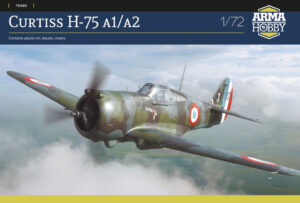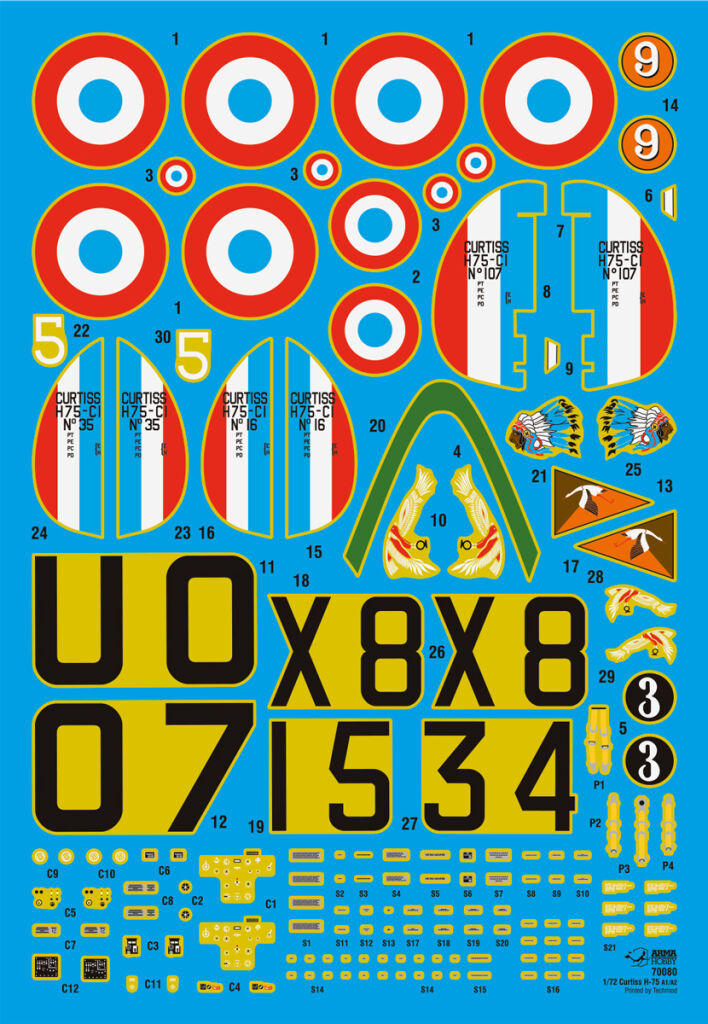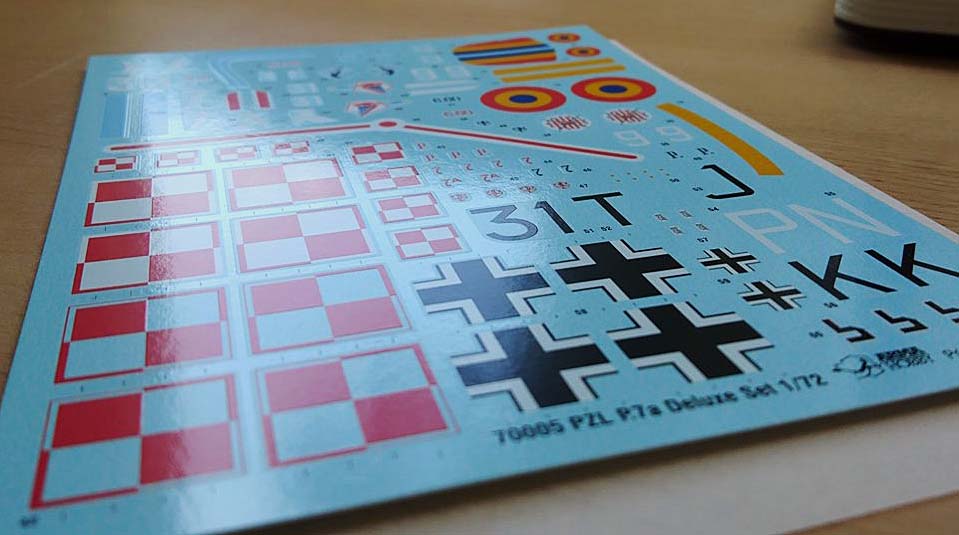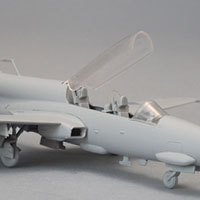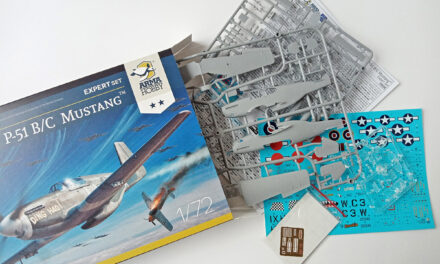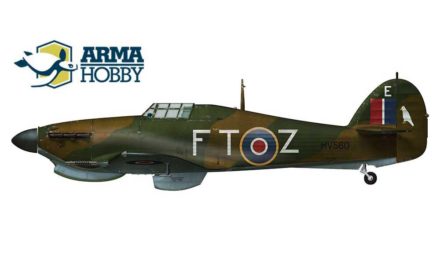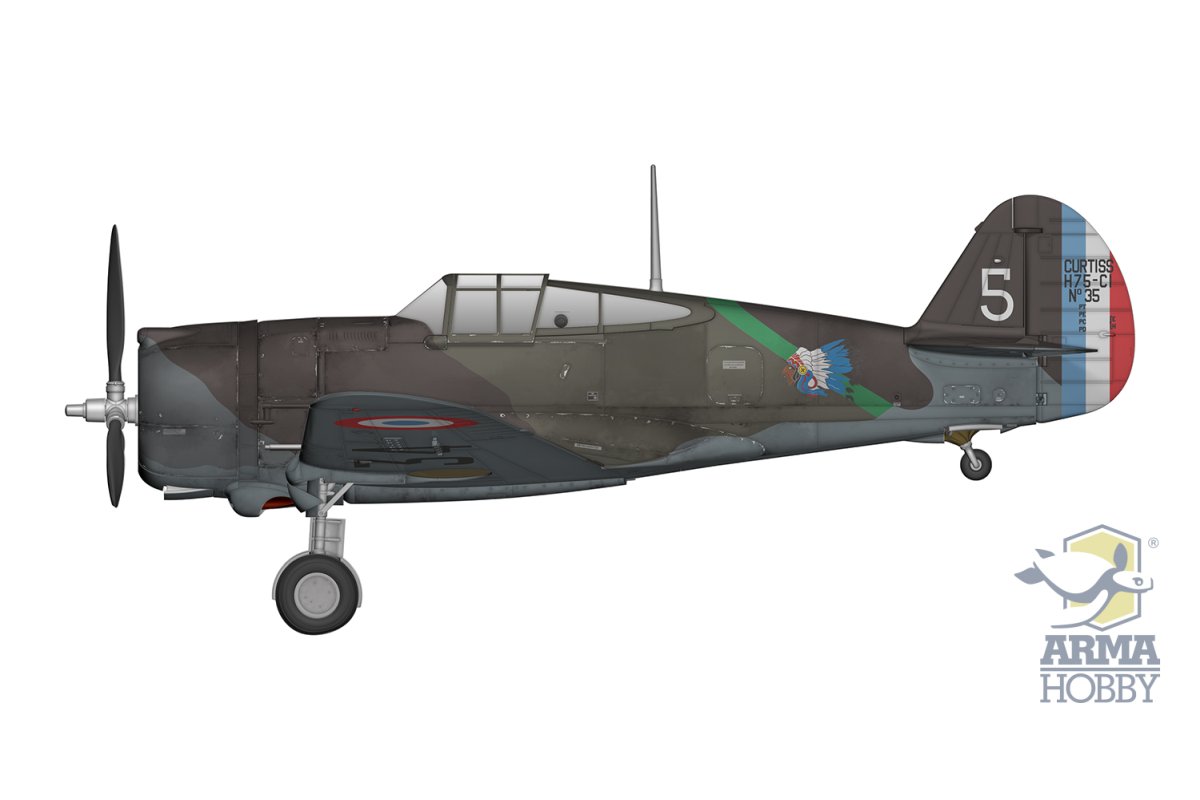 The second squadron to be rearmed with Curtiss H-75 A1s was GC II/5, stationed in Reims. The unit received the new aircraft during March 1939. The squadron, re-deployed at the end of August 1939 to Toul-Croix-de-Metz, became famous after it fought a battle against German Messerschmitts on 6 November.
The second squadron to be rearmed with Curtiss H-75 A1s was GC II/5, stationed in Reims. The unit received the new aircraft during March 1939. The squadron, re-deployed at the end of August 1939 to Toul-Croix-de-Metz, became famous after it fought a battle against German Messerschmitts on 6 November.
9 versus 27 – the most famous air battle of the “Phoney War”
On that day, nine Curtisses tasked with providing cover for a reconnaissance Potez 63.11 of GR II/22 clashed with twenty-seven Messerschmitt Bf 109Ds of JGr 102, which were performing a fighter sweep mission over the Saarland (the triangle of Saarbrücken – Merzig – Pirmasens).
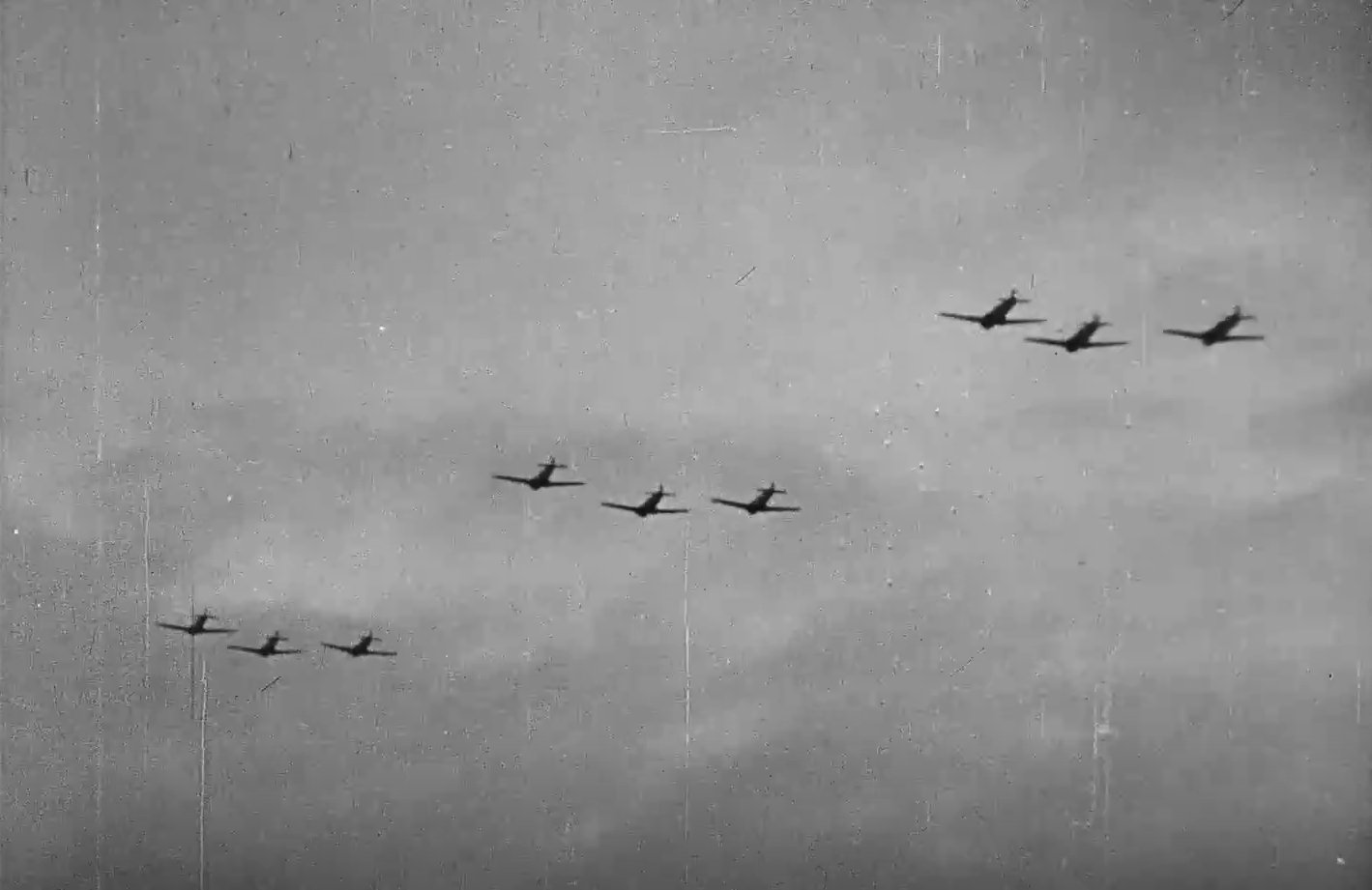 Photo: Still from Journal du Guerre n°7 newsreel/Fair use – right to quote
Photo: Still from Journal du Guerre n°7 newsreel/Fair use – right to quote
The dogfight, which took place between 14:50 and 15:30, was extremely intense. The opponents spotted each other at the same time, and so the element of surprise was lost. Fierce individual duels ensued. Both sides tried to make the most of the advantages of their equipment, as well as of their skills, but it was the Germans who allowed themselves to be drawn into a circle dogfight, in which Curtiss had a clear advantage over the “one-oh-nine”.
But the Messerschmitt accelerated faster, especially in a dive, which made it ideal for the hit-and-run tactic.
Despite being outnumbered three to one by the Germans, upon returning to base the French pilots reported nine kills and one probable – with no losses of their own. The final balance of the clash, verified by both sides, was five Bf 109D-1s destroyed and three damaged. Several Curtisses returned to base with bullet holes, while one had been so seriously hit that it landed in Toul with its undercarriage retracted. Another fighter had to make a chance landing due to lack of fuel, however it was not damaged.
 Curtiss H-75 n°35 code 5 of the 3rd squadron of GC II/5 at Toul Croix-de-Metz. Toul Croix-de-Metz in November 1939. Photo: Salès, L.Persyn collection
Curtiss H-75 n°35 code 5 of the 3rd squadron of GC II/5 at Toul Croix-de-Metz. Toul Croix-de-Metz in November 1939. Photo: Salès, L.Persyn collection
The heroes
The commander of JG 102 was Hauptmann Hannes Gentzen, with seven kills from the September Campaign. The pilots of the French squadron also had some combat experience, and gained their first victories: four confirmed and two probable. These earlier successes of GC II/5 were the reason why the unit was visited by the Supreme Commander of the Air Force , General Vuillemain, and the Chief Inspector of Fighter Aviation, General d’Harcourt. Coincidentally, the visit took place exactly on 6 November. The event received a lot of publicity – all the more so because the actions undertaken by the ground troops were not nearly as spectacular: the front was standing still, and the “Phoney War” was in full swing. An SCA (Service Cinématographique de l’Armee) film crew soon turned up at the unit. The feat of the French aviators was described in the press, becoming known as the “Fight of 9 against 27”. The footage, which also included an orchestrated “reconstruction” of events involving a Potez 63 dressed up to resemble a German aircraft, clearly made for propaganda purposes, found its way into War Chronicle No. 7 (Journal du Guerre n°7) of 11 November 1939. You can see it here:
https://imagesdefense.gouv.fr/fr/17920.html
(starting a:. 7:25)
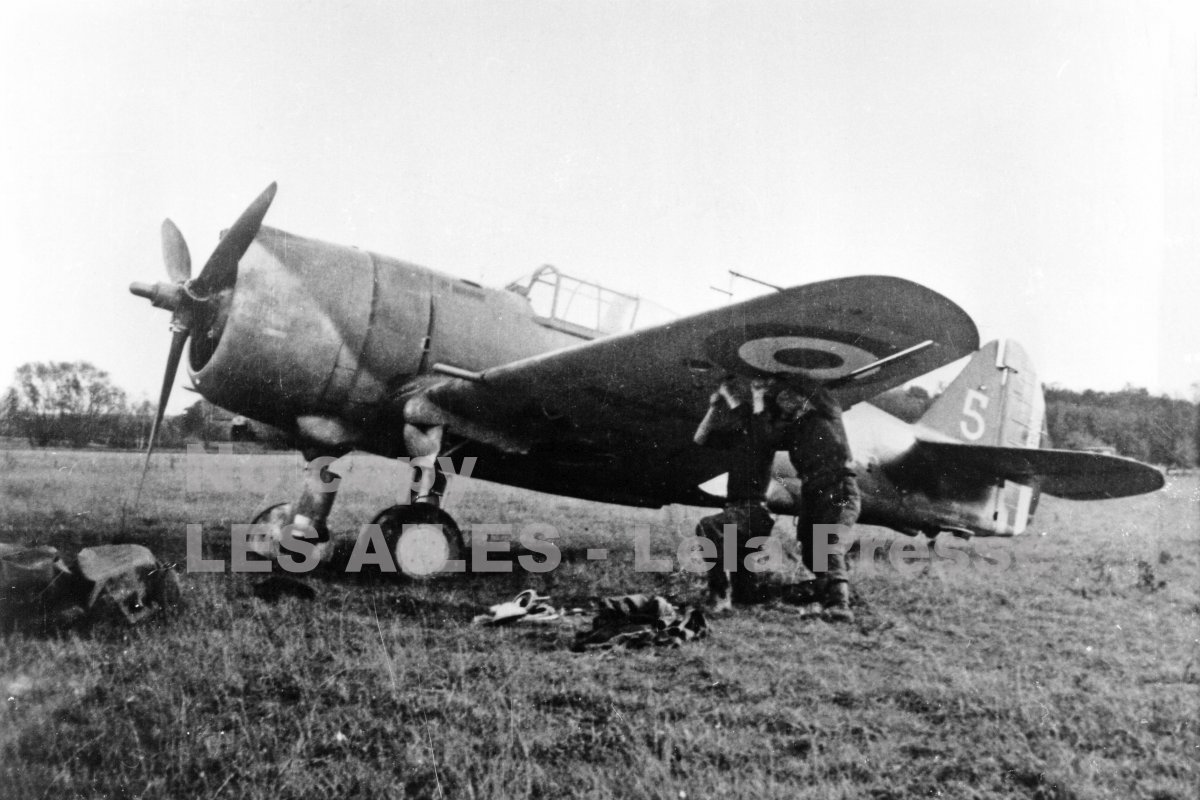 Curtiss H-75 n°35 code 5 of the 3rd squadron of GC II/5 at Toul Croix-de-Metz. Toul Croix-de-Metz in November 1939. Photo: Salès, L.Persyn collection
Curtiss H-75 n°35 code 5 of the 3rd squadron of GC II/5 at Toul Croix-de-Metz. Toul Croix-de-Metz in November 1939. Photo: Salès, L.Persyn collection
On 11 November (First World War Victory Day), another visit took place at Toul-Croix-de-Metz, this time in order to decorate the pilots. Among the attendees, in addition to the generals, was Prime Minister Daladier himself.
Widespread news of the battle reinforced the already good reputation of French military pilots, as well as of the American aircraft. It had a huge impact on morale and the belief in the strength of French aviation. Whereas among the Germans, the shock at the outcome of the battle accelerated the re-equipment of JGr 102, with the Bf 109D-1 being replaced by the long-awaited Bf 110.
“Sioux” No. 5
One of the participants of the battle of 6 November was Sgt Maj. Dugoujon of 3rd Flight GC II/5. After the combat, he was officially credited with one “probable” kill of a Bf 109D-1.
His aircraft, Curtiss H-75 A1 n°35 (X834), marked with the white tactical number “5” on the vertical stabilizer, is known from photographs and the propaganda film made shortly after the battle.
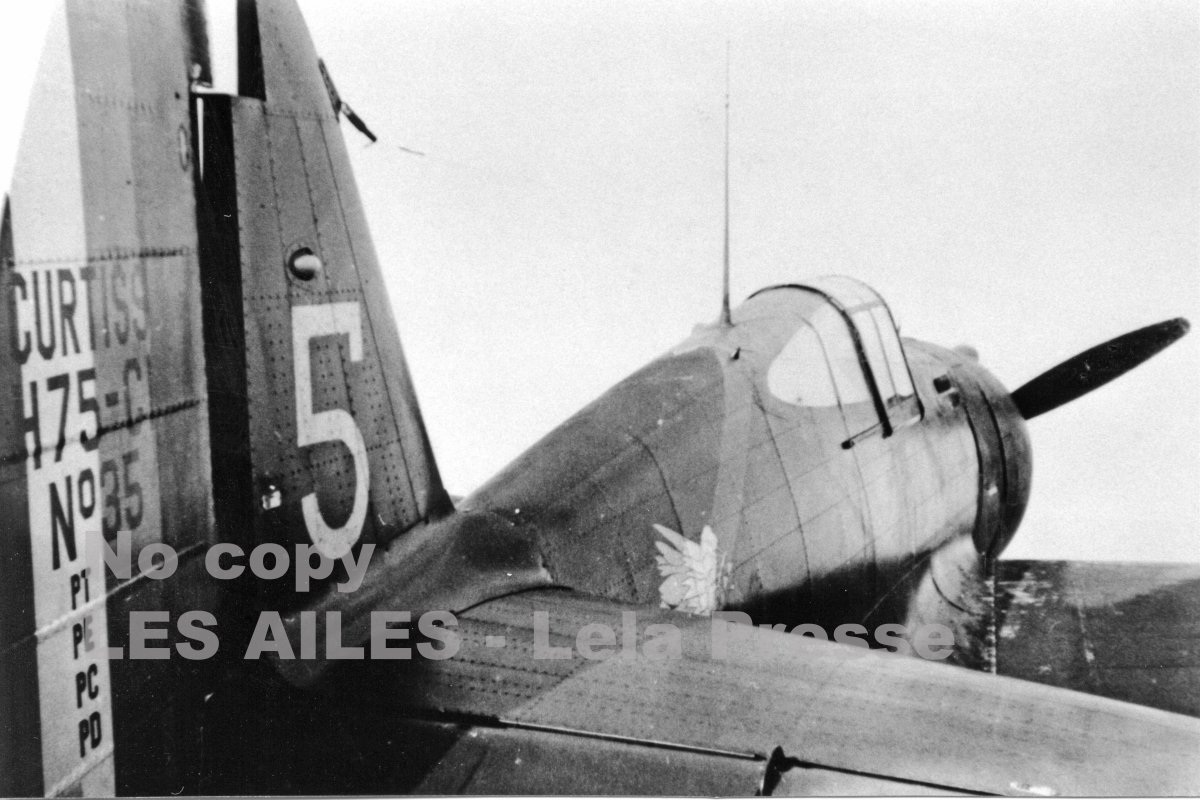 Curtiss H-75 n°35 code 5 of the 3rd squadron of GC II/5 at Toul Croix-de-Metz. Toul Croix-de-Metz in November 1939. Photo: Salès, L.Persyn collection
Curtiss H-75 n°35 code 5 of the 3rd squadron of GC II/5 at Toul Croix-de-Metz. Toul Croix-de-Metz in November 1939. Photo: Salès, L.Persyn collection
As was the case with GC I/5, the first Curtisses sent to GC II/5 were from the early deliveries, and so were initially used without camouflage painting. It was not until the summer of 1939 that these silver aircraft received camouflage consisting of blotches of “kaki” (khaki), “brun” (dark brown) and “gris bleu foncé” (dark grey-blue) on the upper surfaces. The undersides of the aircraft were painted in “gris bleu clair” (light grey-blue). Although there was no strict pattern of camouflage patches for the type, these fighters, painted in the workshops of Reims airbase, are definitely distinguishable from all other French Curtiss H-75 As. The camouflage patches on these aircraft were arranged in diagonal, very wide bands, often with almost straight borders. The part of the fuselage under the horizontal stabilizer was the same colour as the underside.
 Curtiss H-75 n°35 code 5 of the 3rd squadron of GC II/5 at Toul Croix-de-Metz. Toul Croix-de-Metz in November 1939. Photo: Salès, L.Persyn collection
Curtiss H-75 n°35 code 5 of the 3rd squadron of GC II/5 at Toul Croix-de-Metz. Toul Croix-de-Metz in November 1939. Photo: Salès, L.Persyn collection
The aircraft had standard identification marks: with a diameter of 1.2 m on the underside of the wings, and miniatures, with a diameter of 0.3 m, on the upper side.
Further, it had narrow tri-colour stripes on the rudder, which were characteristic of the first eighty or so H-75 A1s. The Matricule Militaire code on the underside of the wings was painted in a style typical of approximately the first fifty machines.
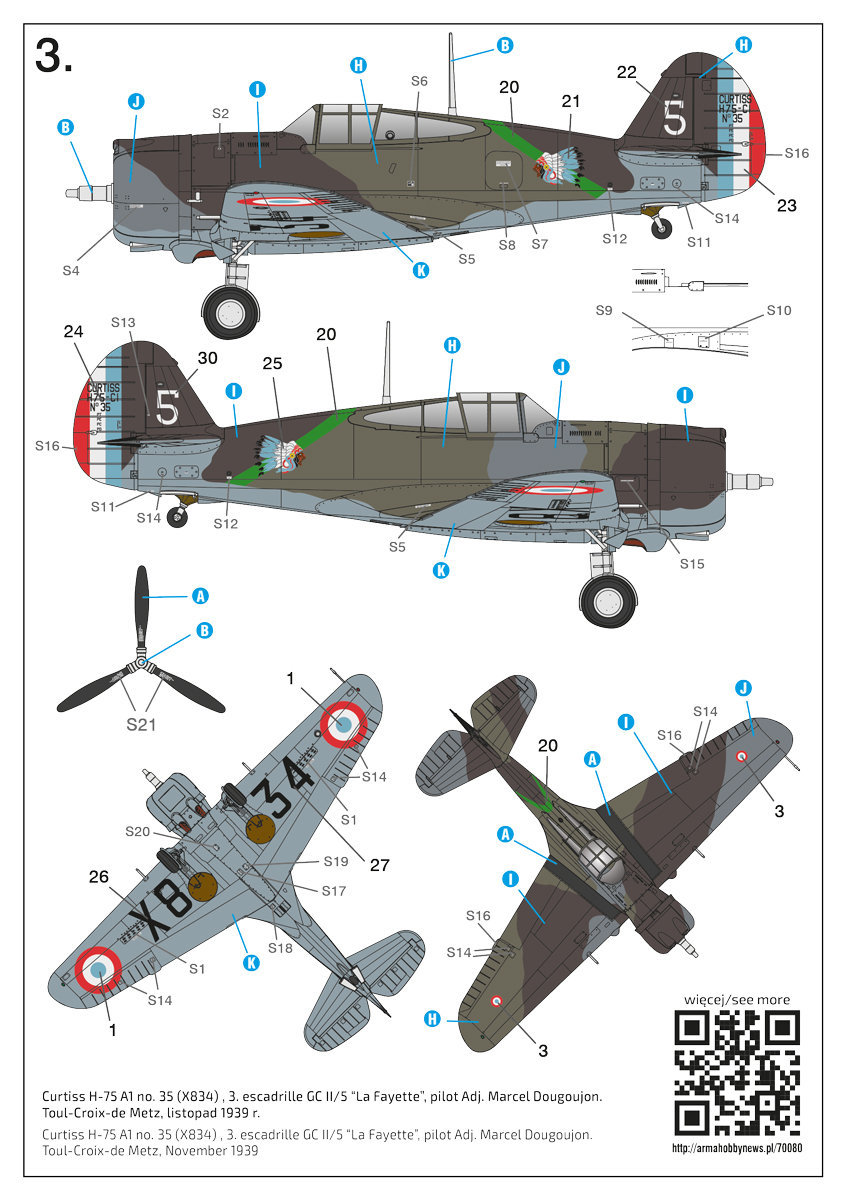
 Curtiss H-75 A1 no. 35 (X834) was delivered by the SNCAC assembly plant in Bourges on April 5, 1939, to the 3rd escadrille of II/5 fighter group in Reims. After application of the camouflage, the flag on the rudder was left in inital size. Also the roundels on the upper wing surface have been left unchanged: 30 cm diameter. The stencils were protected when the camouflage was painted and appear on an aluminum background. This aircraft was damaged on April 24 1940 and sent to Toulouse for repairs. Later it was captured by the Germans and sold to Finland
Curtiss H-75 A1 no. 35 (X834) was delivered by the SNCAC assembly plant in Bourges on April 5, 1939, to the 3rd escadrille of II/5 fighter group in Reims. After application of the camouflage, the flag on the rudder was left in inital size. Also the roundels on the upper wing surface have been left unchanged: 30 cm diameter. The stencils were protected when the camouflage was painted and appear on an aluminum background. This aircraft was damaged on April 24 1940 and sent to Toulouse for repairs. Later it was captured by the Germans and sold to Finland
Indian’s Head
The name of 3rd Flight GC II/5, “La Fayette”, and its emblem – the head of a Native American Indian wearing a headdress – is a reference to the traditions of Flight N 124, which was made up mainly of American volunteer aviators who came to France and fought in the war starting in 1916, before the USA officially entered the conflict.
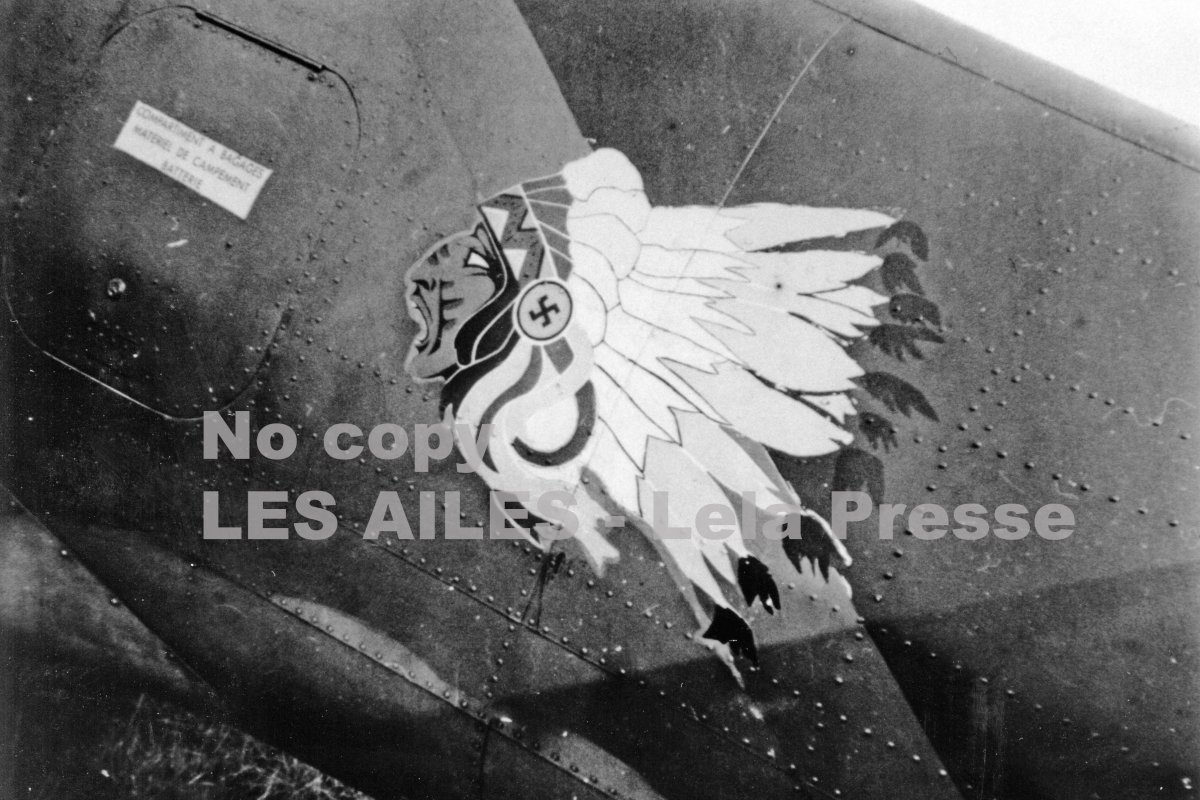 Curtiss H-75 n°35 code 5 of the 3rd squadron of GC II/5 at Toul Croix-de-Metz. Toul Croix-de-Metz in November 1939. Photo: Salès, L.Persyn collection
Curtiss H-75 n°35 code 5 of the 3rd squadron of GC II/5 at Toul Croix-de-Metz. Toul Croix-de-Metz in November 1939. Photo: Salès, L.Persyn collection
The Flight (originally known as the “American Flight”) was named after the French Marquis General de La Fayette, who had fought against the British in the American War of Independence (1775–1783). Following the incorporation of the volunteers into the American Expeditionary Forces (AEF) in Europe and their subsequent return to the US, the traditions of the Flight were continued in France by Flight SPA 124, which was recreated in 1921.
 Photo: Still from Journal du Guerre n°7 newsreel/Fair use – right to quote
Photo: Still from Journal du Guerre n°7 newsreel/Fair use – right to quote
A distinctive feature of Curtiss n°35 were the ventilation slots located on the sides of the fuselage machine gun cowlings in front of the cockpit. Such a modification can only be found on a few specimens from series A1 and A2, and it only became standard starting from the 20th specimen of the A3 series.
Acknowledgements
The photographs illustrating this article ( except those from IWM) were obtained courtesy of Matthieu Comas and Lionel Persyn and the excellent magazine Les Ailes dedicated to the history of French aviation. Lionel is also the author of key books on French Curtisses. Thank you for the photos and the valuable consultation!
References and Sources
- L. Persyn. “ Le combat des « 9 contre 27»“ in: Avions 157 Mai/Juin 2007
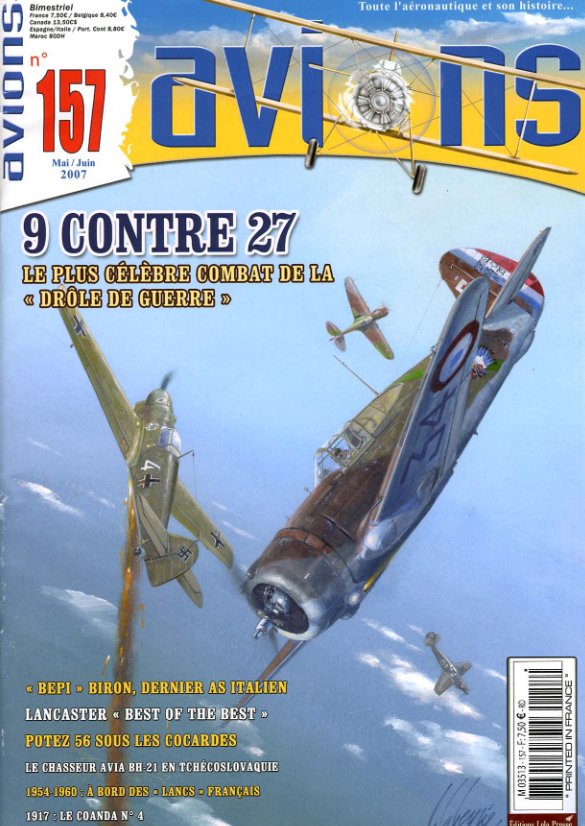
- L. Persyn : “Les Curtiss H-75 de l’armée de l’Air”, Coll. Histoire de l’aviation 22, Lela Presse 2008
p. 122-124
Check also:
Curtiss H-75 A1/A2 – plik z detalami do samodzielnego wydruku 3D
A former scale modeller, he now values perfection and purity of geometric forms more than invisible details. He has long been fascinated by the arcane design and technology used in aviation of the 1930s and 1940s. Also interested in the colours and markings of military aircraft of the period, including French ones with a connection to the Polish Air Force in the West. Co-author of several publications on the subject. For relaxation, he listens to loud, eclectic music from the 1980s and 1990s.
This post is also available in:
 polski
polski


